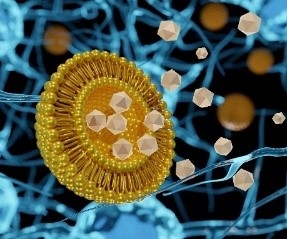LDD Characterization
Lipid-based carriers have the advantages of physiochemical diversity, biocompatibility, high drug loading, long-term stability and large-scale production. Currently, biodegradable lipid-based carriers are the only drug vehicles approved for clinical use. Based on these characteristics, novel technologies and approaches have been developed by Creative Biolabs to design a safe, effective delivery platform for loading hydrophobic drugs and thereby increase delivery efficiency.

Some therapeutic compounds do not dissolve well in aqueous pharmaceutical carriers due to poor water solubility and exhibit poor availability, which somewhat reduces the efficacy of hydrophobic drugs. There are many strategies to overcome this problem by increasing solubility and improving delivery efficiency, and one of the promising techniques is lipid-based drug delivery (LDD). In particular, nanotechnologies are incresingly used in the field of lipid-based drug delivery, with the aim of improving the stability and pharmacokinetics (PK) of hydrophobic drugs by increasing their cell uptake and targeting of specific tissues. For example, solid lipid nanoparticles used for drug delivery can self-assemble into stable, safe and biodegradable nanoparticles (NPs), in which the core provides a reservoir for hydrophobic drugs. Lipids can also promote oral absorption and transport of encapsulated drugs, as well as enhance the oral bioavailability of hydrophobic drugs, and are therefore considered to be very attractive drug delivery vehicles.
Morphology of Lipid-Based Nanoparticles
In general, the shape of the nanoparticles does have an effect on their cellular uptake and circulation time. However, direct comparisons between different shapes of lipid-based nanoparticles have not been studied. For most lipid-based nanoparticles, such as liposomes, they are spherical, just like the most common nanoparticles on the market. However, the shape of the lipid-based nanoparticles can be altered by manipulating the inner compartments of these particles. In the solid lipid nanoparticles (SLNs) and nanostructured lipid carriers (NLCs), changes in the lipid type and composition of the lipid mixture can lead to platelet-shaped particles. Platelet-shaped SLN and NLC have no advantage in drug incorporation rate compared to spherical particles because their volume available for drug encapsulation is less than the maximum volume. In addition, lamellarity also affects the stability, drug loading capacity and drug release properties of the liposome. Compared with a vesicle with fewer layers, a higher degree of lamellarity often gives a more stable liposome vesicle, which is able to resist deformation induced by osmotic stress and is more stable to changes in temperature.
Size and Size Distribution
Particle size is one of the most important parameters for controlling biodistribution and elimination of colloidal drug delivery systems. Unlike microspheres, nanosized drug delivery systems are not filtered out by the capillary bed of the lungs after initial intravenous injection. Particles with hydrodynamic diameters below 5.5 nm have rapid urinary excretion and renal elimination. For larger particles, they are not subjected to renal clearance and these particles accumulate in the spleen and liver to a greater extent. Knowledge of the major locations of nanoparticle accumulation and the pore size of the transvascular opening helps to determine the optimal size of the nanoparticles. At the same time, other parameters such as particle morphology and surface charge must also be considered.
Phase Transition Temperature (PTT)
Polymeric nanoparticles are relatively insensitive to temperature, while liposomes undergo changes in viscosity and drug release properties as temperature changes, which is an important factor in liposome drug delivery because the encapsulation of hydrophilic molecules occurs within the liposomal aqueous interior surrounded by the phospholipid bilayer, whereas the lipophilic molecules are incorporated into the hydrophobic core of the phospholipid bilayer. Different lipids have their own unique PTT and exist in different physical states above or below this temperature. Below PTT, lipids generally have well-ordered orientation (solid gel-like phase), whereas above this temperature, they are usually in the liquid-crystalline (fluid) phase. PTT ultimately determines the fluidity of the liposome, so the fluidity of the liposome bilayer can be altered by using phospholipids of different PTT.
Plasma Proteins Interactions-Particle Stability and Clearance
Once the nanoparticles are introduced into the bloodstream, they can interact with plasma proteins such as complement proteins, lipoproteins, immunoglobulins and albumin. This interaction is essential because it determines the stability and clearance behavior of the nanoparticles. In particular, lipid-based nanoparticles are more susceptible to protein destabilization than other nanoparticles because their interaction with certain proteins, such as high-density lipoprotein and its apolipoproteins, can lead to particle deformation and leakage of the encapsulated contents.
Creative Biolabs is a world-class company that conbines medicine, biology, chemistry and other diverse fields. Over the years, we have been dedicating to our duties, providing each customer with top-quality products and services such as custom lipid synthesis, which have won the praise from clients all over the world. If you have any requirement, please feel free to contact us and we are sure to provide you with the best service in the world.

For Research Use Only. Not For Clinical Use


 For Research Use Only. Not For Clinical Use
For Research Use Only. Not For Clinical Use